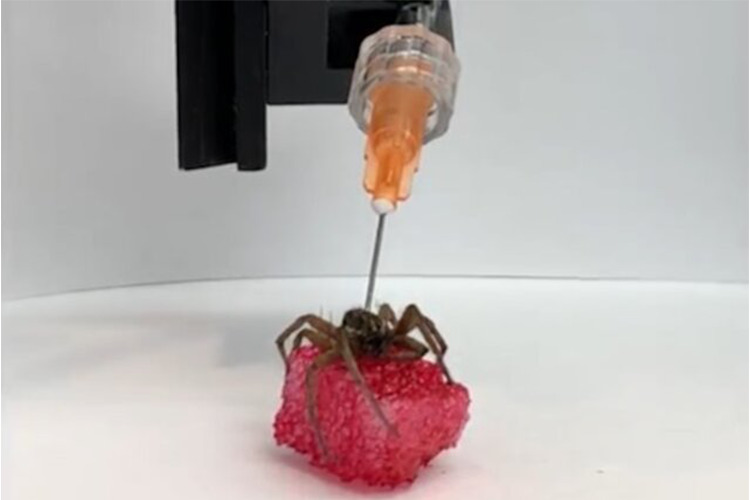
With Spiders 8 legs and multiple joints, they are able to pick up odd shaped objects with ease. photo courtesy of Cassidy Ward
As if spiders couldn’t get any creepier, they can now crawl around in robots with a new development.
Necrobotics is a new development in robotics, which uses dead organic matter in mechanical robotics. The term “Necrobotics” was coined by Faye Yap, a student at Rice University, who teamed up with her colleagues to figure out why spiders curl up when they die.
Spiders have inward flexor muscles, similar to muscles found in humans, however they are only able to flex inward, just as the name suggests. They don’t have extensor muscles like humans have, the muscles need to extend their legs outward to basically do anything. All eight of their legs are attached to a section of their body called the cephalothorax, which is the head and their middle. This part of their body controls the outward movement of their legs. Spider bodies are filled with a fluid called hemolymph, which helps them control their legs. They rapidly increase the pressure in their cephalothorax, causing their legs to extend outward. This essentially makes it so pressurized air or other liquids would be able to have the same effect.
In Yap’s case, she and her team injected pressurized air into a wolf spider to make it into a gripper. The process is to euthanize the spider by injecting a needle and seal, thus you are able to use it in robotics. These tests included lifting various small items and even other spiders. After testing concluded, they were able to get over 1,000 open close cycles with just one spider before signs of tearing were shown. The spider grippers were able to also lift items that were up to 130% of their own body weight. The eight legs allow them to have a good grip on odd shapes. However, there are limitations, 1,000 open-close cycles are fairly low for a gripper, especially if used in a mass production environment. Although the grippers are biodegradable, preventing the introduction of another waste stream, the needles and seals are not.
Either way, this is another way organic material and robotics are being fused. This, of course, raises some ethical concerns. Robotics teacher Matt Santambrogio shared, “I don’t know how I feel about that to be honest…my concern would be where that organic material would be coming from.” As the years go by, what the world’s authors have dreamed of in science fiction could be coming closer and closer to reality. Recent developments in the medical field are integrating the use of robots in surgery. John Hopkins University, a private research university in Baltimore, Maryland, is using robots for surgical stitches. However, we are still far away from having cool cybernetic implants that help you move faster than the speed of light. “It’s a growing field and a growing science and all advancements are going to new areas,” says Santambrogio. So at least for right now, Necrobotics is going to be only in the lab. However, with every new experiment and new development, it could be possible that this technology could be taught in high school in the future. “I wouldn’t say it’s an impossibility, I just think that it would be challenging because of the funding, sterile environment and space. I think it would be prohibitive,” comments Santambrogio. It is difficult to imagine how 10 years from now TJ robotics students could be using necrobotics in competitions. This is just another example of how technology and sciences are advancing exponentially.